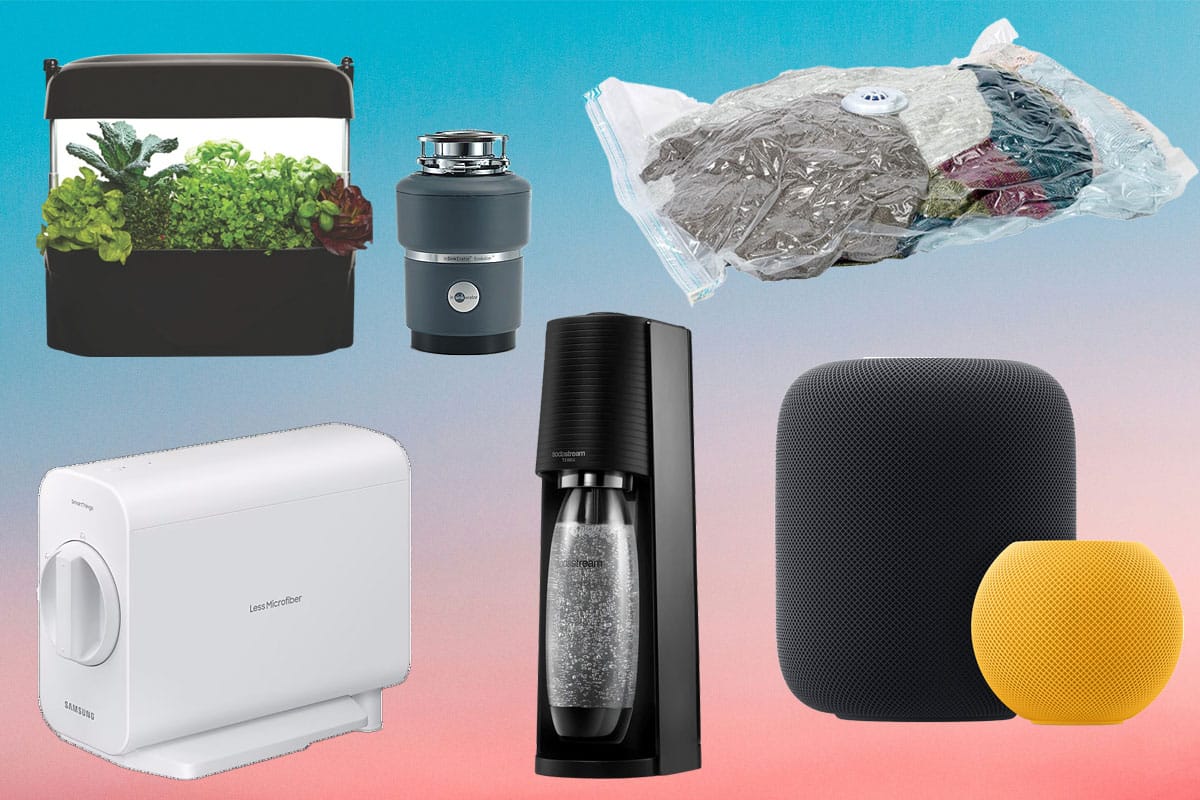
You'd be forgiven for thinking that we're losing the war on waste given some of the recent headlines around redcycle. But this is far from the case. Australian households are actually incredibly conscious of their impact. Composting, recreational permaculture and recycling are ingrained habits for many. In fact, 63% of household waste is recovered and used again.
Our outdoor culture shows us every day what we're fighting to protect. It's what spurs us on and inspires Australians to be continually more conscious of how we treat Mother Earth. For those looking to create the most sustainable home possible, we can turn to tech. We've identified gadgets, new and old, that can help to further lower your consumption and impact
1. Vacuum storage bags
Many charity stores are overwhelmed with unsellable donations, only 15% of what they receive is resold. 6000kg of clothing dumped in landfill every 10 minutes.
But what to do with all my expensive skinny jeans? They're not in fashion anymore but they'll be back in five to seven years. Enter vacuum storage bags. If you have a stack of clothes that you know you could wear again in the future, use a vacuum seal bag to store them away. It helps to preserve your clothes too, making them last longer. This will reduce your need for to consume new items in the future and also save you money in the long run.
2. Vegepod Kitchen Garden
It's frustrating that whenever a recipe calls for rosemary, you need to spend $6 to get four sprigs that are packaged in an unrecyclable plastic shell. If you're looking to start growing some of your own food, herbs are a great place to start. Out of all the items in your produce section, fresh herbs have some of the most unnecessary packaging. Growing your own herbs in a Vegepod Kitchen Garden reduces plastic waste - and also saves you money.
3. Samsung Less Microfiber Filter
Just one of the reasons that I don't love buying polyester, when you wash these clothes little bits of plastic fibre are stripped off and end up down the drain and into the water ways. In fact, the washing of plastic garments is one of the main contributors to microplastic pollution in the ocean. As a step towards combating this form of pollution, Samsung has developed a specific washing machine attachment that can catch up to 98% of the microfibres in your wash.
4. Apple HomePod
Did you know that one of the biggest uses of fossil fuels is electricity generated to power homes - everything from lights to air conditioners? How many times have you accidentally left appliances on? Forgotten to turn off the aircon, left lights on, the TV in sleep mode? All of that drains electricity unnecessarily. An Apple HomePod can help. Any device that runs on electricity can be connected to a HomePod, and you can use this HomePod to turn your appliances on and off, even if you're out of the house. This trick will save on your power bills too.
5. Insinkerator
Insinkerators (or garbage disposals) drastically reduce how much food waste you put into landfill, which in turn reduces the greenhouse gases produced by excessive landfill. You'd be shocked by how easy it is to connect one of these into your home. They're compatible with most sinks. As long as you have an accessible power outlet, all you need to do it buy it and have a plumber set it up.
6. SodaStream
A SodaStream means you'll never run out of mixers again. But in addition to being convenient, it eliminates the need for you to buy single-use, plastic soft drink bottles. This saves on unnecessary plastic, but also on the fossil fuels required to ship heavy mixer drink bottles.



